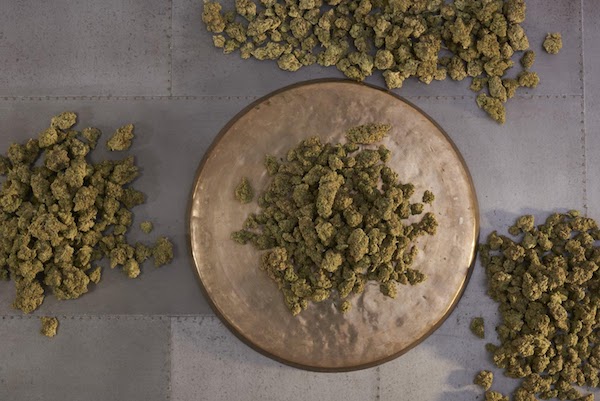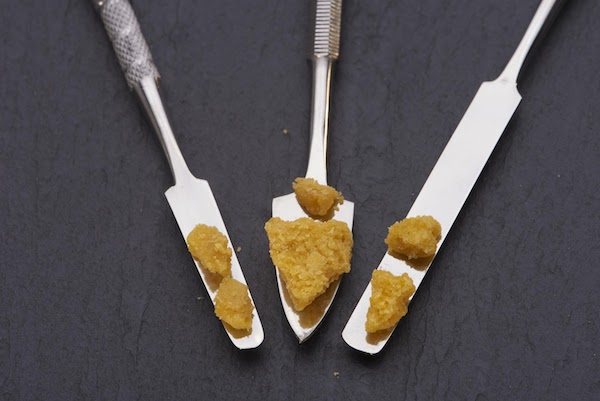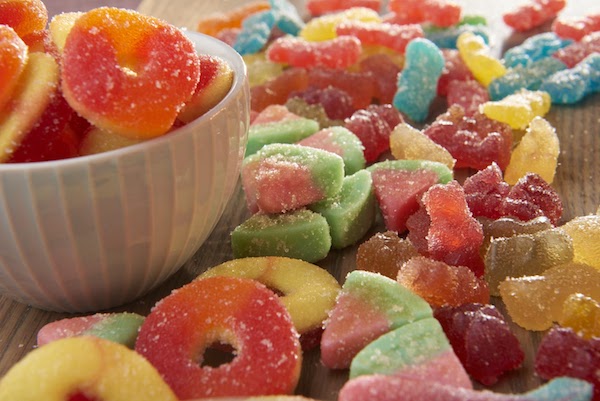Know the cannabis basics before you buy!
With so many options on the market, choosing which cannabis product to use can be overwhelming. What is so important about CBD and THC? Should you eat your herb, smoke it, or use a topical? Each ingredient and method of cannabis consumption affects the body differently.
This article is intended to discuss the differences, benefits, and safety precautions necessary when shopping for the product that’s right for you.

The Chemistry of Cannabis
One factor that must be considered, among all others, before selecting a cannabis product is its chemistry. The active components of every product foster a specific result. Cannabis contains many cannabinoids, but every product highlights one of two, cannabidiol and tetrahydrocannabinol. These two scientific words are difficult to say and spell, so most people simply refer to them as CBD and THC. There are many reasons why someone might consider consuming marijuana, and these two constituents are essential when deciding which product is best for your individual circumstances. Some products contain only one while others contain both.
CBD produces little to no psychoactive effects and is commonly used for health reasons; to assist with stress, promote better sleep, treat nausea, and ease pain. It has also demonstrated dramatic improvement in those with epilepsy and PTSD, and there is significant research being conducted concerning its influence on tumors and cancerous cells.
THC is what most recreational users are most concerned with. It creates the psychoactive effect that cannabis is known for and is extracted from the marijuana plant. Even though most people use the words hemp and marijuana interchangeably, they are different plants from the cannabis genus.
Hemp contains no more than.03 mg THC and is used for its high levels of CBD. In fact, strictly CBD products cannot legally contain more than.03 mg of THC. Marijuana naturally contains much more, producing a signature euphoric sensation as it binds to receptors in the brain. The average marijuana strain contains 12% THC.
Reading the packaging of every product is fundamental to understanding what it will do for you; However, once we know what we are consuming and why, we need to decide how we are consuming it. Let’s explore our options!
Flower
This is the most natural form of cannabis consumption, picked straight from the plant with little to no processing. Flower is considered the traditional method of consumption via the respiratory system.
Even though it may seem like the simplest option, it comes with a set of additional choices that might make your head spin if you jump in without guidance.

Cannabis Rolled in Paper
Much like rolling your own cigarettes, this method involves purchasing loose flowers and rolling paper which is available in a variety of materials including hemp and rice. One end is burned and smoke is “puffed” and inhaled from the other side. Joints are rolled with pure flowers. Blunts are rolled with a mixture of tobacco and weed to produce a double action from nicotine and cannabinoids.
Pipe
Essentially the same as joints and blunts without the paper. The plant material is placed into the pipe and burned. We carry pipes in a huge assortment of shapes and sizes, but the glass variety is considered the best material for the job.
Water Pipe
This is an alternative option that involves, you guessed it, water! This includes bongs and bubblers which use employs the water to cool and filter the smoke offering a full strength, flavorful toke without the dry heat of a hit taken from a normal pipe or joint.
Vaporizing or “Vaping”
Vaporized cannabis is a popular way to consume cannabis without the toxins of burning paper and combusting herbs entering the airways and lungs. A vaporizer heats the herb enough to release the cannabinoids without fire. They come in a variety of shapes and sizes. The most common are pens, stationery, and portable vaporizers.
Concentrates
Concentrates are much stronger than flowers, potentially containing up to 95% cannabinoids. Like anything this strong, more is not better. In fact, too much can create an overwhelming high that can make you miserable.
As long as you begin with small doses, you will have a pleasant experience. One of the most common methods used with concentrates is dabbing. The concentrate is added to a nail or banger, which is heated to produce a vapor.
This vapor is inhaled gently by the user. You may also use a concentrate pen or add some as a bowl topper by dropping a little concentrate into your bong bowl along with the flowers and water.

Edibles
Orally consumed cannabis can be divided into two groups: those absorbed by the gastrointestinal tract and those absorbed sublingually (under the tongue). People typically choose this option to avoid smoke and smells.
It’s always been a favorite, but edibles are becoming even more popular in recent years.

Gastrointestinal: Get In My Belly!
These infused edibles include brownies, cookies, candy, and yes, even hot sauce! The possibilities are virtually endless.
Because this method of consumption takes up to an hour to feel the full effects, it’s very important to take care and limit your dosage. The tendency is to not notice a difference and eat more within the first hour to increase the high.
Many people do not consider the potency and longevity of edibles. A little goes a long way and too much can lead to panic attacks and other unpleasant side effects that occur with accidentally overdoing it.
So take it slow and use the minimum amount recommended first. Then increase your dose as you become familiar with your personal response.
When consuming edibles, you will also be high for much longer, up to six hours. Factors that may change the duration and strength of your high can include
- your metabolic rate
- the amount of cannabinoids contained in the product
- individual tolerance levels
- food on your stomach before consuming the edible
Sublingual: Another Reason To Love Your Tongue
Sublingual absorption is one of the fastest ways to medicate via cannabis consumption. Any food or medication that must pass through the stomach must also go through the liver’s processing before it can enter the bloodstream, which lessens its effectiveness.
This is avoided by taking advantage of the vessel-rich tissues located under the tongue that allow the cannabinoids to go straight into your bloodstream. Products that utilize this method of consumption are:
- lozenges
- extract oils
- tinctures
- dissolvable strips
- sublingual sprays
This method allows the best administration of cannabinoids by increasing their bioavailability. Due to this, the amount you need is much less. The sublingual method requires only .2 to .3 mg to feel the effects of marijuana.
Drinks: The Best of Both Worlds
Raw, juiced marijuana produces no high but offers a wide range of health benefits backed by scientific research. Cannabis has anti-inflammatory and anti-tumor properties, and it also exhibits the potential to increase cell function and reverse cell damage. People who seek out these properties of the herb will find the best results from raw juice, which is rich in nutrients and offers increased bioavailability sublingually as you drink.
Although raw juice offers no high, many drinks on the market do. Once the juice has been heated, a chemical reaction takes place, replacing THCA with THC and CBDA with CBD. However, the heat causes it to lose much of its nutritional value. Since drinks combine the effects of sublingual and gastrointestinal absorption, your high starts right away and lasts for many hours.
Topicals
These are not technically “consumed” per se. The largest organ in our body is our skin, and it absorbs many benefits from cannabis. Skin conditions and muscle tension respond exceedingly well to the healing qualities of this herb. Topicals are perfect for these purposes because they do not produce a high, like most products.

Photo by Anastasiia Ostapovych on Unsplash
The most common reason people medicate with marijuana is pain management. For this reason, topical cannabis products are popular among those who experience chronic pain caused by conditions and diseases such as fibromyalgia, multiple sclerosis, endometriosis, and HIV.
There are two groups of topical products; they are classified as
- dermal
- subdermal
Dermal products only affect the site they are applied to.
Subdermal topicals permeate the skin, enter the bloodstream and affect the entire body. They work quickly to create a pain-reducing effect within a few minutes that will last for one to two hours. Subdermal cannabis patches can last up to two days. Topical products are offered in a variety of forms:
- creams
- balms
- lotions
- bath bombs
- oils
- patches

Photo by Louis Hansel on Unsplash
Cannabis Consumption: Products Near Me
No matter which cannabis product you choose, what matters is that you are wise in your purchase and responsible in your use. With so many benefits associated with this special plant, it’s important that you know your options and understand what will work best for you.
It’s our hope that this guide will help you meet or exceed your expectations. We value your satisfaction. If you have any questions that Our Blog or FAQs page cannot answer, don’t be afraid to reach out and Contact Us for more information on MediThrive’s products or services.
Bibliography
“Cannabis Consumption Methods for Medical Patients.” Cannabis Classroom, Medical Jane, 9 Mar. 2020, www.medicaljane.com/category/cannabis-classroom/consuming-cannabis/#infused-edibles.
Grinspoon, Peter. “Medical Marijuana.” Harvard Health Blog, Harvard University, 15 Apr. 2020, www.health.harvard.edu/blog/medical-marijuana-2018011513085.
“Methods of Use.” Cannabis Awareness and Prevention Toolkit, Stanford University Medicine, www.med.stanford.edu/cannabispreventiontoolkit/HealthEffects/MethodsOfUse.html.
Holland, Kimberly; Wilson, Debra Rose, Ph.D., MSN, RN, IBCLC, AHN-BC, CHT. “CBD vs THC: What’s the Difference?” Healthline, Healthline Media, 20 May 2019, www.healthline.com/health/cbd-vs-thc.

